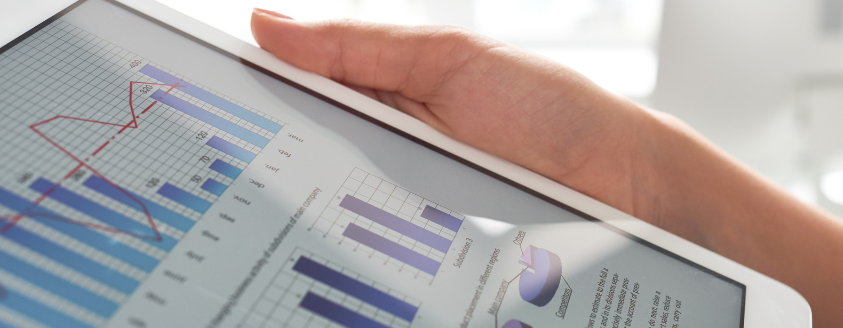
Accurate demand forecasting is not just about predicting future sales. It’s moving towards more of a strategic focus for businesses that want to make their supply chain management work better and to manage uncertainties. By properly predicting customer demand, companies can adjust inventory levels, choose a more efficient production plan, and make informed strategic decisions that impact profitability and customer satisfaction. Unfortunately, this has become increasingly difficult over the past several years.
To ensure you make the right decisions to meet your business demands, let’s explore the necessity of proper demand forecasting and the different ways and methods to improve it.
Accurate demand forecasting serves as a solid base for effective supply chain management and operational efficiency. It allows businesses to align production, staffing, and inventory levels with fluctuating market demands, thereby minimizing costs associated with excess inventory or stockouts. It also allows companies to respond swiftly to changes in consumer behavior, economic conditions, and competitive landscapes.
The ripple effects of inaccurate forecasting—such as excessive inventory costs, missed sales opportunities, and compromised customer service—emphasize the critical need for reliable forecasting models. Traditional models often rely on simple statistical approaches and historical data, which means they struggle to address the challenging aspects of today’s business environment. They may overlook crucial factors like seasonal variations, economic shifts, or sudden changes in consumer preferences, and are often difficult to adapt and scale to today’s increasingly complex markets and high-volume datasets.
Taking a modern forecasting approach solves many of these challenges. Modern forecasts typically allow businesses to adapt quickly to changing market conditions by providing real-time insights and predictive capabilities based on broader data and more sophisticated algorithms. Machine learning algorithms, for instance, continuously learn and adjust based on new data inputs, enhancing forecast accuracy and reliability. This adaptability can not only help companies optimize inventory management and production planning but also support strategic initiatives directed towards driving growth and competitive advantage.
Forecasts that are built for today’s business environments and available data deliver the intelligence companies need to think ahead – and many of the benefits they provide rely on advanced algorithms like machine learning, deep learning, and neural networks to identify complex patterns and relationships in the data.
Integrating AI and machine learning into demand forecasting algorithms is a trademark of modern forecasting programs, transforming how businesses foresee and respond to new factors. These technologies excel in identifying hidden patterns and trends within data, enabling businesses to forecast with greater accuracy and confidence.
AI-driven models also help in automating data analysis, streamlining operations, reducing manual errors, and empowering decision-makers with actionable insights. The benefits of these advanced technologies range from increased accuracy and seamless incorporation of internal data to improvements in data quality and ethical practices, as AI can be used to clean data and detect biases.
Within specific industries, incorporating AI and machine learning into forecasting can power additional downstream capabilities. For example, AI can segment customers and recommend products based on individual behavior, working in tandem with forecasting to anticipate wants and needs. In other cases, AI can be used to anticipate demand for specific offerings at exact moments in time and adjust prices automatically, optimizing pricing to balance demand levels.
Using advanced analytics to power more accurate and actionable forecasts is a critical step for businesses looking to modernize forecasting programs. However, having cutting-edge forecasting models isn’t the only piece companies need to consider. Another crucial component of forecasting is the mentality they hold regarding uncertainty.
Uncertainty is a natural aspect of demand forecasting that businesses must recognize and incorporate into their practices. In fact, companies that seek deeper insight into their demand often use stochastic modeling, which forecasts the likelihood of multiple outcomes under various conditions, in order to make more educated decisions based on a full suite of possible outcomes.
Building a demand forecasting program that suits your specific business needs and requirements involves a systematic approach and careful consideration of multiple factors. In addition to selecting appropriate models and technologies, effective forecasting programs require internal alignment, a robust data management system, and support at every level of the business to turn insights into action.
Crafting a strong forecasting program looks different at every company, but it typically follows a journey like the following:
By following these steps, you can create a demand forecasting program that transforms your business operations and decision-making processes. This requires an ongoing effort across departments to maintain accuracy, provide high-quality data, and ensure action is taken on forecast insights. However, it more than pays off in the long run in terms of business efficiency and profitability.
Effective demand forecasting is pivotal for businesses aiming to achieve operational excellence and sustainable growth. By adopting modern forecasting models powered by AI and machine learning, businesses can enhance their ability to forecast demand accurately, optimize resource allocation, and capitalize on market opportunities. Embracing innovation in demand forecasting isn’t just about staying ahead—it’s about building a foundation for long-term success in changing business conditions.
At Wavicle, we combine our deep technical knowledge and industry experience to create robust demand forecasting solutions that empower businesses with the insight they need to thrive today and stay ahead of their competition. Reach out to us to learn more about how we can help improve your forecasts and grow your business.